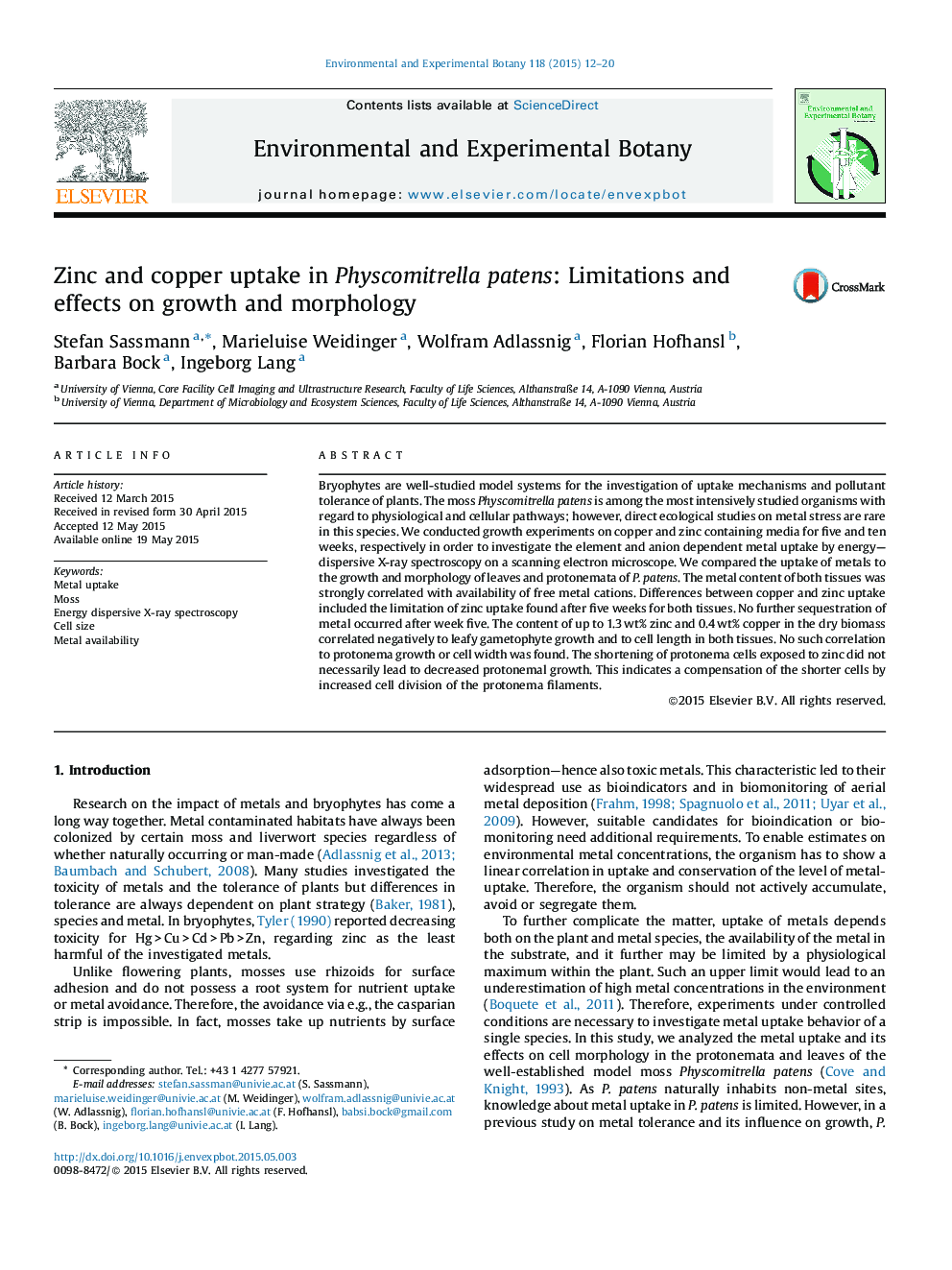| Article ID | Journal | Published Year | Pages | File Type |
|---|---|---|---|---|
| 4554203 | Environmental and Experimental Botany | 2015 | 9 Pages |
•P. patens accumulated less copper than zinc.•Zinc uptake was saturated at approximately 1.3 wt% in both moss tissues (protonemata and leaves).•Tissue metal content was negatively correlated with growth of the leafy gametophor but not for protonemata.•Metal uptake reduced cell length but not cell width.•Reduced cell length did not lead to reduced protonema growth; shortening of cells was compensated by increased cell division.
Bryophytes are well-studied model systems for the investigation of uptake mechanisms and pollutant tolerance of plants. The moss Physcomitrella patens is among the most intensively studied organisms with regard to physiological and cellular pathways; however, direct ecological studies on metal stress are rare in this species. We conducted growth experiments on copper and zinc containing media for five and ten weeks, respectively in order to investigate the element and anion dependent metal uptake by energy—dispersive X-ray spectroscopy on a scanning electron microscope. We compared the uptake of metals to the growth and morphology of leaves and protonemata of P. patens. The metal content of both tissues was strongly correlated with availability of free metal cations. Differences between copper and zinc uptake included the limitation of zinc uptake found after five weeks for both tissues. No further sequestration of metal occurred after week five. The content of up to 1.3 wt% zinc and 0.4 wt% copper in the dry biomass correlated negatively to leafy gametophyte growth and to cell length in both tissues. No such correlation to protonema growth or cell width was found. The shortening of protonema cells exposed to zinc did not necessarily lead to decreased protonemal growth. This indicates a compensation of the shorter cells by increased cell division of the protonema filaments.
